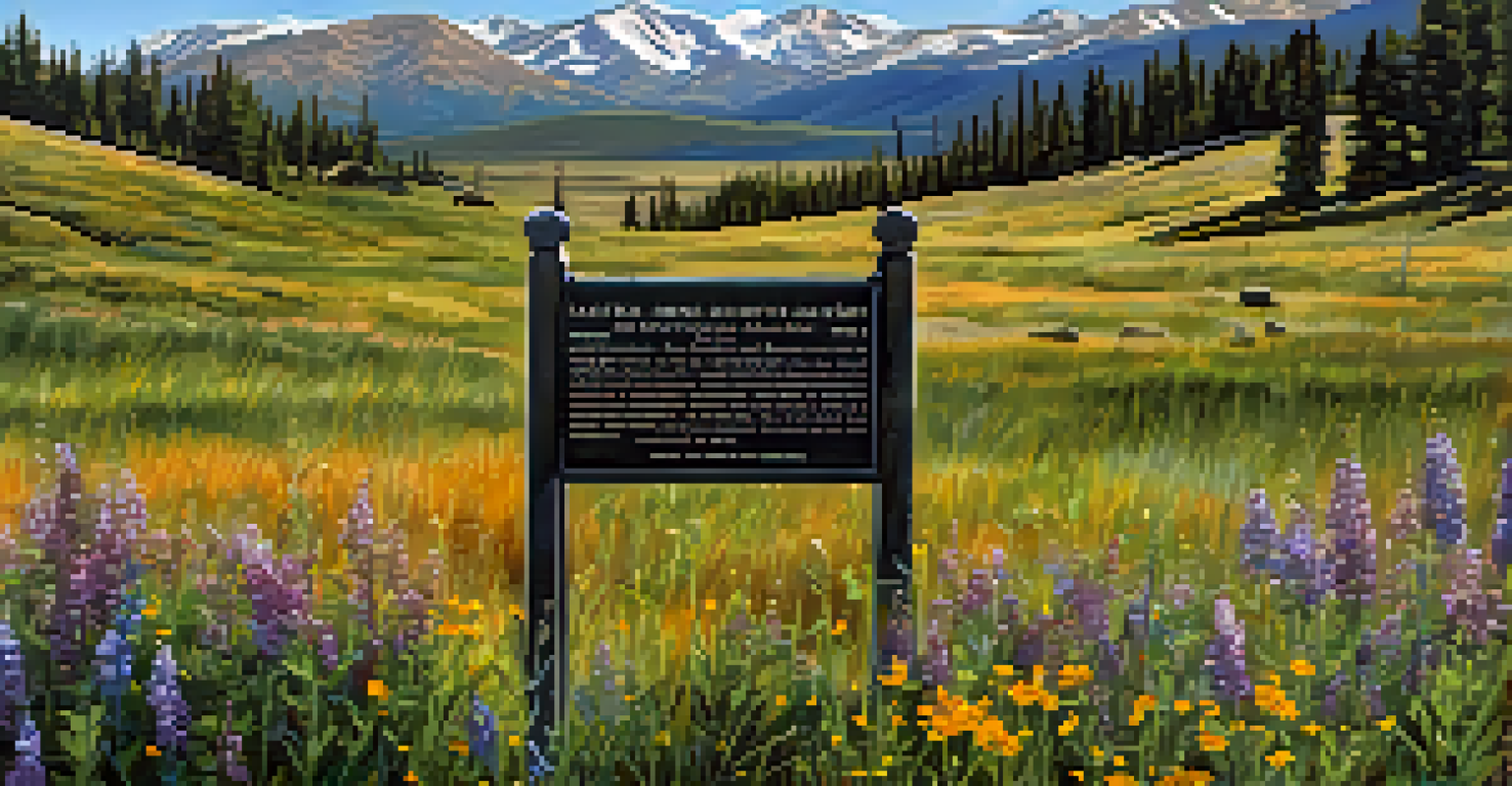Community Involvement in Colorado's Historic Preservation Efforts

Understanding Historic Preservation in Colorado
Historic preservation in Colorado is all about maintaining the state’s rich heritage. It involves protecting buildings, sites, and neighborhoods that tell the stories of the past. This effort not only preserves the aesthetic value but also promotes cultural identity and community pride.
Preservation is a form of empowerment that allows communities to shape their own destinies.
In Colorado, historic preservation is often a collaborative effort involving local governments, non-profits, and passionate citizens. By working together, these groups can effectively identify and prioritize sites that require protection. This collaborative spirit fosters a sense of ownership among community members.
Moreover, preservation efforts can significantly boost local economies by attracting tourism and supporting small businesses. A well-preserved historic district can serve as a vibrant center for arts, culture, and commerce, drawing visitors eager to explore Colorado’s unique history.
The Role of Community Engagement in Preservation
Community engagement is the backbone of successful historic preservation in Colorado. When local residents actively participate, their voices help shape preservation priorities and strategies. This involvement fosters a sense of belonging and ensures that preservation efforts align with community values.

Engagement can take many forms, from public meetings to volunteer days where residents help restore local landmarks. These opportunities not only empower individuals but also create lasting connections among neighbors. Sharing stories and experiences during these events deepens the collective understanding of a community's history.
Community Drives Preservation Success
Active community engagement is essential for shaping preservation priorities and fostering a sense of belonging.
Additionally, engaged communities are more likely to advocate for preservation policies and funding. When residents see their heritage being valued and protected, they are motivated to support initiatives that promote sustainable development while honoring the past.
Local Organizations Leading the Charge
Numerous organizations in Colorado are dedicated to the cause of historic preservation. Groups like the Colorado Preservation, Inc. and local historical societies work tirelessly to educate the public and advocate for preservation efforts. They provide resources, training, and support to communities looking to protect their historical assets.
Historic preservation is not just about saving old buildings; it’s about saving the stories they tell and the community they represent.
These organizations often host workshops and events that bring together preservation enthusiasts, experts, and community members. For example, they may organize heritage festivals that celebrate local history while raising awareness about preservation needs. Such events not only educate but also inspire action among participants.
Collaboration with local governments is also crucial for these organizations. By partnering with municipalities, they can influence policies and secure funding that benefits preservation projects across the state. This synergy between organizations and government entities amplifies the impact of preservation efforts.
Success Stories of Community-Led Preservation
There are numerous success stories in Colorado where community involvement has led to significant preservation victories. For instance, the revitalization of Denver’s historic Five Points neighborhood is a testament to collaborative efforts. Local residents, business owners, and preservationists worked together to restore and celebrate this culturally rich area.
Another inspiring example is the preservation of the historic mining town of Leadville. Community members banded together to protect its unique architecture and heritage, turning it into a thriving tourist destination. Their collective passion for history transformed Leadville into a vibrant hub that honors its past while embracing the future.
Local Organizations Boost Efforts
Organizations like Colorado Preservation, Inc. play a vital role in educating the public and advocating for preservation projects.
These stories highlight the power of community engagement in preservation efforts. When people are passionate about their history, they can create tangible change that benefits not only current residents but also future generations.
Challenges Faced in Preservation Efforts
Despite the successes, historic preservation in Colorado is not without its challenges. One significant hurdle is the balancing act between development and preservation. As communities grow, the pressure to replace historic structures with modern developments can lead to the loss of valuable heritage.
Funding is another critical issue, as many preservation projects rely on grants and donations. Economic fluctuations can impact the availability of these resources, making it difficult for communities to maintain their historic sites. This uncertainty can stifle efforts and discourage community involvement.
Additionally, raising awareness about the importance of preservation remains a challenge. Some community members may not fully understand the value of protecting their history. Educational initiatives are essential to highlight how preservation enriches communities and contributes to their identity.
The Impact of Social Media on Preservation Efforts
Social media has emerged as a powerful tool for promoting community involvement in historic preservation. Platforms like Facebook and Instagram allow local organizations to share stories, events, and success stories with a broader audience. This visibility can spark interest and encourage more community members to get involved.
Moreover, social media facilitates collaboration among different communities and organizations. People can share best practices, resources, and experiences, creating a network of support for preservation efforts across the state. This exchange of ideas fosters innovation and inspires new approaches to protecting heritage.
Challenges in Balancing Growth
Historic preservation faces hurdles such as funding limitations and the pressure of development threatening historic sites.
Additionally, social media serves as an effective advocacy tool, allowing communities to rally support for preservation initiatives. By showcasing the cultural significance of historic sites, residents can mobilize their networks to engage with local policymakers and advocate for preservation-friendly policies.
Looking Ahead: The Future of Preservation in Colorado
The future of historic preservation in Colorado hinges on continued community involvement and collaboration. As communities become more aware of the value of their heritage, they are likely to advocate for stronger preservation measures. This growing awareness can lead to more funding and resources dedicated to these efforts.
Emerging technologies, such as digital mapping and virtual tours, can enhance preservation efforts by making history more accessible. These tools can help communities document their heritage and share it with a wider audience. Engaging younger generations through technology can also inspire a new wave of preservation advocates.

Ultimately, the future of historic preservation in Colorado will rely on the passion and dedication of its residents. By working together, communities can ensure that their unique stories and cultural identities are preserved for generations to come.